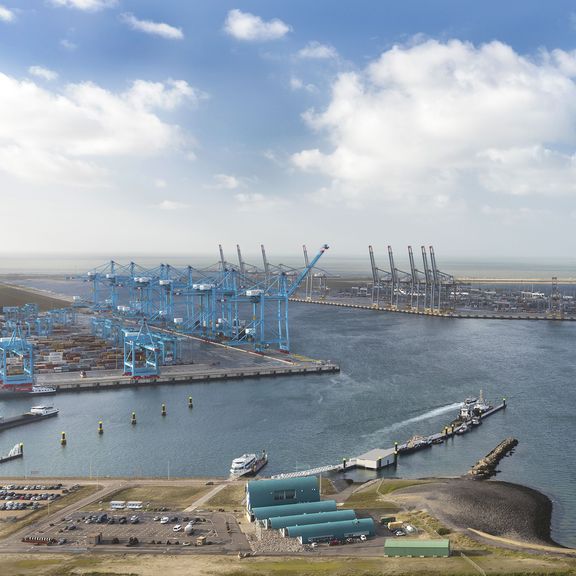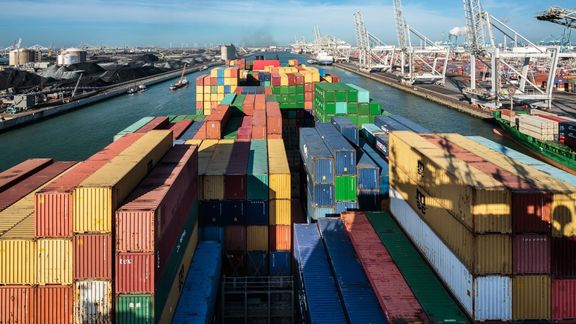
The port that will take you ahead
Innovating, pushing boundaries and working hard are in the DNA of Rotterdam. It has made the port of Rotterdam the largest in Europe and one of the most important logistics hubs in the world. If you opt for Rotterdam, you will sail along on the Rotterdam success and be ready for the future.
Groundbreaking pioneer
The port of Rotterdam is a pioneer: a port that does not shy away from hard work and knows how to push boundaries. This mentality has made the port what it is today and ensures that it is prepared for the future. Just to give an example, the construction of the Nieuwe Waterweg in 1872 was a bold venture at the time, but it greatly improved the accessibility of the port of Rotterdam from the sea and allowed it to grow into one of the world's most important ports. Today, thanks to Maasvlakte 2 the surface area of the port has increased by 20 per cent and container handling capacity has tripled, making the port of Rotterdam ready for increasing freight flows. The port also plays an important role in the introduction in Europe of LNG (liquefied natural gas) as a cleaner alternative fuel. And its ambitions in regard of biofuels, bioenergy and biochemicals are just as limitless.
Strategic location
The port of Rotterdam has optimum accessibility thanks to its favourable geographical position right on the North Sea and at the mouth of the river Rhine. The terminals are directly adjacent to deep water and can be accessed from the open sea quickly and safely without the need for sea locks. This allows vessels to be unloaded and loaded in no time, so that they can be on their way to their next destination quickly. An extensive intermodal network of rail, inland shipping, road, short sea and pipelines provides a wide selection of connections to the rest of Europe.
GLOBAL HUB & GATEWAY
Thanks to over 500 deep sea, short sea, feeder and RoRo liner connections to more than 1,000 ports worldwide, the port of Rotterdam is a major international hub and the gateway to Europe. Furthermore, it is first port of call for many shipping companies, resulting in huge time savings.

Unrivalled nautical infrastructure
With a surface area of over 12,600 hectares, the port of Rotterdam is the largest port in Europe. Its unparalleled depth, wide basins, minimal tides and the lack of locks ensure it is accessible 24/7, even to maximum size vessels. In addition to over 70 kilometres of quaysides, the port offers a wide range of buoys and dolphins for ship-to-ship transfers or repairs and to serve as a berth.
Best port infrastructure
The Dutch port infrastructure has been elected best port infrastructure in the world by the World Economic Forum several times. This ranking is mainly due to its modern facilities, the extensive hinterland network and the major investment projects in Rotterdam. Billions have been and are being invested in the expansion of the intermodal network, the construction of Maasvlakte 2, quays, state-of-the-art terminals, modern refineries, tank storage, ICT systems and new facilities for biofuels and bioenergy.
Market leader in bulk and containers
Not only is the port of Rotterdam the largest port in Europe, it is also market leader in dry bulk, liquid bulk and container handling. The port mainly owes this position to the economies of scale Rotterdam offers. Not a single port in the Hamburg - Le Havre area is able to receive the largest dry bulk, liquid bulk and container ships 24/7. And: the larger the ship, the more cost-effective the transport costs. This makes the port of Rotterdam a logical choice.
International
By bringing the 'Port of Rotterdam' brand and port development and management expertise to growth markets, the Port of Rotterdam Authority helps ports across the world to achieve their maximum potential.